- Home
- Firewood Types
- Cedar Firewood
Cedar Firewood
This post may contain affiliate links so I earn a commission.
When I think about cedar firewood I think about one thing.......kindling.
The trees unique characteristics make it a superior wood for starting a fire.
By using just a few pieces of dry cedar kindling split into roughly one inch diameter pieces you'll have a nice hot fire in no time.
When lighting a fire inside a wood burning stove or fireplace it's important to create a quick, hot fire.
Slow burning fires that smoke and smolder leave behind unburnt gasses that adhere to the inside of cold chimney walls.
This is better known as creosote.
By creating a hot fire, you reduce the amount of unburnt gasses and the heat of the fire quickly warms up the chimney, reducing the chances of creosote buildup which in turn reduces the chances of a chimney fire.
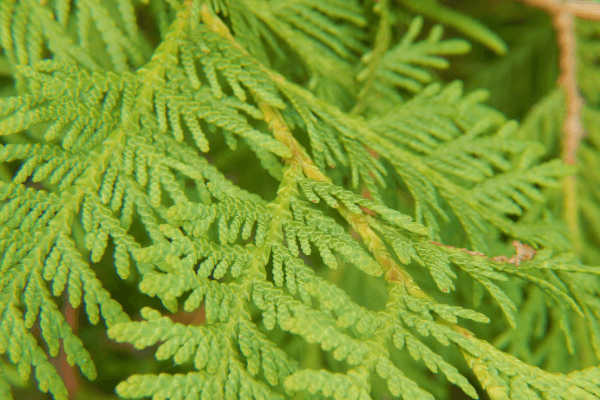 Limbs Of A Cedar Tree
Limbs Of A Cedar TreeWet or unseasoned firewood only increases the chances of creosote buildup.
If you've ever tried to start a fire with wet wood you'll quickly find that it doesn't want to light.
Or if it does, it just sizzles and barely burns. These cold fires create very unsafe burning conditions.
Using dry, seasoned firewood along with cedar kindling that easily lights will drastically reduce the amount of creosote in your chimney.
Depending on how much firewood you burn every year, you should have your chimney and wood stove cleaned yearly.
Even the best burning practices and EPA certified wood stoves can still slowly build up a layer of creosote in your chimney.....but no where near as fast as poor burning habits and wet firewood.
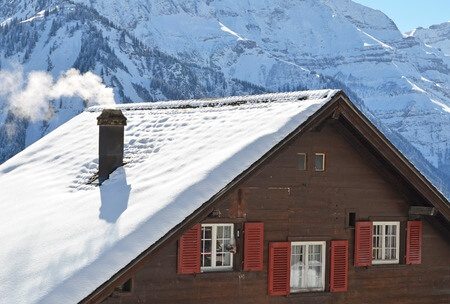
I clean my chimney once a year, in the spring so my wood stove is ready for use in the fall.
This yearly maintenance routine, along with burning dry firewood has worked great.
Uses For Cedar
The trees we all call "cedars" are probably arborvitae or junipers.
In the United States, the trees we refer to as red cedars are the Thuja plicate (Western Red Cedar) and Juniperus virginiana (Eastern Red Cedar).
When you think of a cedar tree perhaps the first thing that comes to mind is the unique, pleasant aroma.
This smell comes from the oil found in the center heartwood of the tree.
The oil is only found in older, more mature trees.
This oil is different from the sap you would find in a pine tree.
It won't clog up your chainsaw or stick to gloves and clothing like pine sap. It's more of an oil as opposed to a sticky substance.
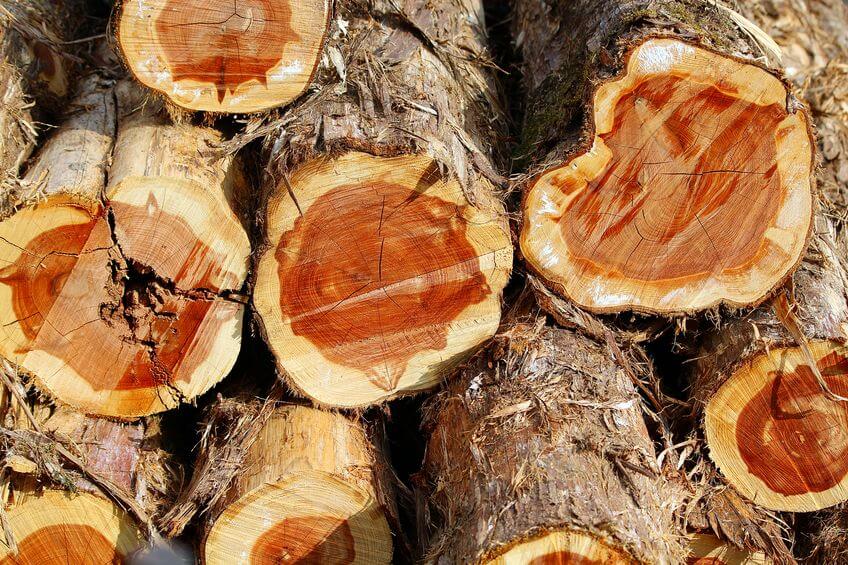 Cedar Logs
Cedar LogsThe fragrance of the oil resinates throughout the wood leaving behind the cedar odor.
The odor is usually pretty strong when you first cut or split a cedar log.
However, after it's been split for a while you'll notice the pleasant aroma decreases over time.
The wood from the cedar tree has many uses.
Cedar is a repellant to moths and other insects which is why closets are lined with cedar.
Cedar balls or blocks can also be placed inside dresser drawers to help prevent insect damage to clothing.
BBQ and grilling enthusiasts love to cook with cedar planks.
Grilled salmon on a cedar plank has an amazing flavor and aroma. It's one of my favorite ways to cook salmon!
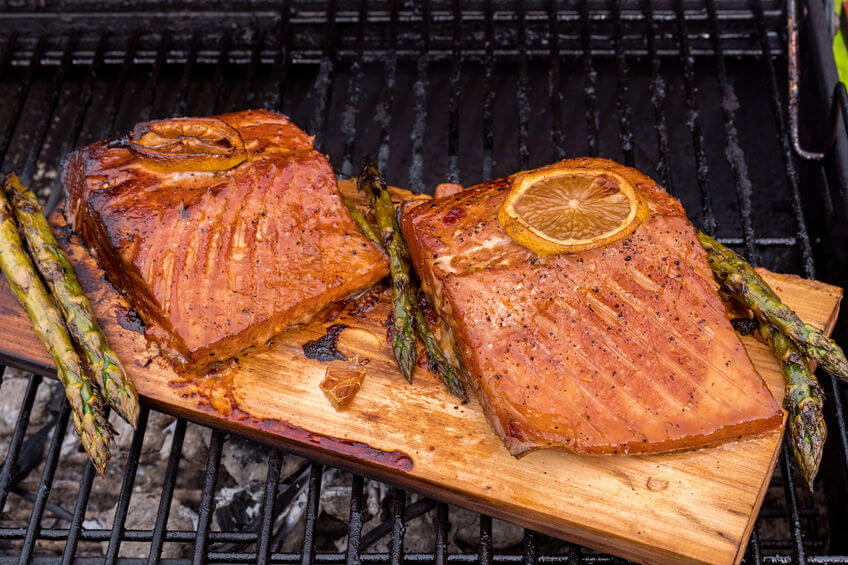
Cedar has been processed throughout history as a valuable resource and has been used in shipbuilding, shingles, bowls and canoes.
Many homes use cedar siding as a natural, anti fungal rot resistant siding choice.
It looks amazing but there's also a lot of maintenance involved with a cedar sided home because the wood turns gray if you don't stain it every 4-5 years.
Splitting And Drying Cedar Firewood
Cedar firewood splits really easy.
Both green and dry logs typically split with one strike of your splitting axe or maul making it a very "user friendly" wood.
Once in a while you'll come across a knot in the wood which makes it a little more difficult, but this is common with just about any firewood type.
Cedar firewood takes about 1 year to season.
For best results, stack the split logs off the ground to prevent ground moisture from soaking into the wood.
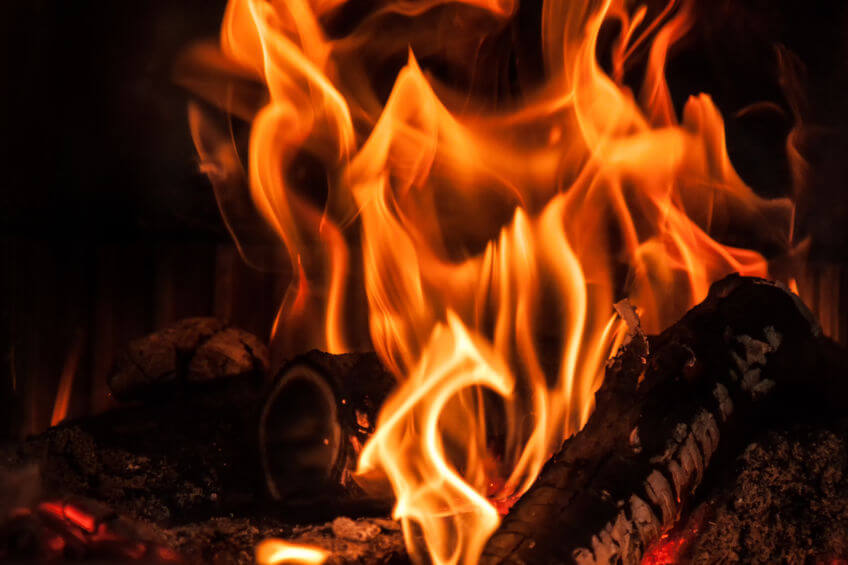
Once elevated, stack cedar in rows to allow the sun and wind to dry the firewood out thought the warm summer months.
Finally, cover the top layer of the wood with a tarp or stack it in a wood shed to keep the wood dry.
When drying any species of firewood never cover the entire stack of wood with a tarp.
You need to leave room for the moisture to escape, if not your firewood could become moldy.
Just cover the top 1/3 of the stack.
Burning Cedar Firewood
Have you ever tried to build a fire using newspaper?
Shoving in piece after piece waiting for the wood to hopefully light?
I have and it's frustrating to say the least.
Here's where cedar comes into play. Take about 3 or 4 sticks of cedar kindling and place them under the larger wood.
The cedar kindling will light easily and provide a hot fire to ignite the rest of your wood.
The porous wood is lightweight and the oils create a hot, fast burning fire.
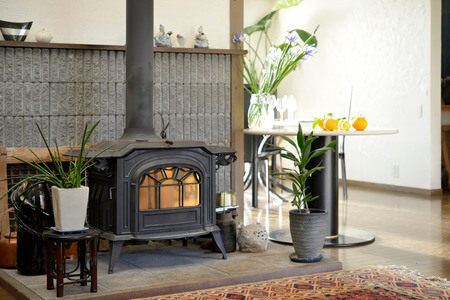
What's the one drawback from using cedar?
It pops and sparks a little bit so if you use it in a fireplace make sure you have a protective screen or glass doors to prevent the hot embers from sparking out onto your living room floor.
If you're looking for longer burn times try burning whole, dry cedar logs which have not been split and mix them with other firewood like oak, maple or ash.
These logs will burn longer than thinly split pieces helping you achieve an overnight burn with enough hot coals to light your fire in the morning.
Overall, if you have access to cedar firewood you're fortunate enough to have some excellent kindling!
Red cedar firewood will produce 13.0 million BTUs per cord.

About the Author
Obsessed with firewood, Nick is behind over 350+ of Firewood For Life's articles, as well as countless reviews, guides and YouTube videos to help readers like you reduce heating costs and create the perfect fire.


